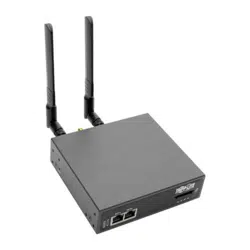Loading ...
Loading ...
Loading ...

277
APPENDIX E: Terminology
TERM MEANING
3G Third-generation cellular technology. The standards that determine 3G call for greater bandwidth
and higher speeds for cellular networks.
AES The Advanced Encryption Standard (AES) is a new block cipher standard to replace DES,
developed by NIST, the US National Institute of Standards and Technology. AES ciphers use
a 128-bit block and 128-, 192-, or 256-bit keys. The larger block size helps resist birthday
attacks, while the large key size prevents brute force attacks.
APN Access Point Name (APN) is used by carriers to identify an IP packet data network that a mobile
data user wants to communicate with and the type of wireless service.
Authentication SMTP (Simple Mail Transfer Protocol)
Authentication is the technique by which a process verifies that its communication partner is
who it is supposed to be and not an imposter. Authentication confirms that data is sent to the
intended recipient and assures the recipient that the data originated from the expected sender
and has not been altered on route.
BIOS Basic Input/Output System is the built-in software in a computer executed on startup (boot) that
determines what the computer can do without accessing programs from a disk. On PCs, the
BIOS contains all the code required to control the keyboard, display screen, disk drives, serial
communications, and a number of miscellaneous functions.
Bonding Ethernet Bonding or Failover is the ability to detect communication failure transparently and
switch from one LAN connection to another.
BOOTP Bootstrap Protocol. A protocol that allows a network user to automatically receive an IP address
and have an operating system boot without user interaction. BOOTP is the basis for the more
advanced DHCP.
Certificates A digitally signed statement that contains information about an entity and the entity's public
key, thus binding these two pieces of information together. A certificate is issued by a trusted
organization (or entity) called a Certification Authority (CA) after the CA has verified that the entity
is who it says it is.
Certificate Authority A Certificate Authority is a trusted third party, which certifies public keys that truly belong to their
claimed owners. It is a key part of any Public Key Infrastructure, since it allows users to trust that
a given public key is the one they wish to use, either to send a private message to its owner or to
verify the signature on a message sent by that owner.
Certificate Revocation List A list of certificates that have been revoked by the CA before they expired. This may be necessary
if the private key certificate has been compromised or if the holder of the certificate is denied the
ability to establish a connection to the console server.
CHAP Challenge-Handshake Authentication Protocol (CHAP) is used to verify a user's name and
password for PPP Internet connections. It is more secure than PAP, the other main authentication
protocol.
DES The Data Encryption Standard is a block cipher with 64-bit blocks and a 56-bit key.
DHCP Dynamic Host Configuration Protocol. A communications protocol that assigns IP addresses to
computers when they are connected to the network.
DNS Domain Name System allocates Internet domain names and translates them into IP addresses.
A domain name is a meaningful and easy to remember name for an IP address.
DUN Dial-Up Networking.
Encryption The technique for converting a readable message (plaintext) into apparently random material
(ciphertext) which cannot be read if intercepted. The proper decryption key is required to read
the message.
Ethernet A physical layer protocol based upon IEEE standards.
Firewall A network gateway device that protects a private network from users on other networks. A firewall
is usually installed to allow users on an intranet access to the public Internet without allowing
public Internet users access to the intranet.
Loading ...
Loading ...
Loading ...
